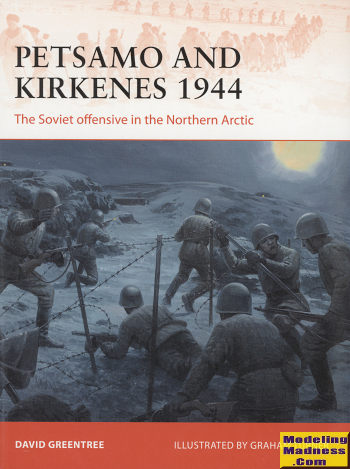 In
1944, after years of pretty much stalemate between the Finnish/German armies and
the Soviets in Finland and the Soviet Union, Finland and the USSR came to terms.
One of those terms was that the German military would leave Finnish territory by
15 September. Well, that was a lot easier said than done as the Germans still
had interests in Finland, especially the northern part of the country and simply
packing up and leaving really wasn't that much of an option.
In
1944, after years of pretty much stalemate between the Finnish/German armies and
the Soviets in Finland and the Soviet Union, Finland and the USSR came to terms.
One of those terms was that the German military would leave Finnish territory by
15 September. Well, that was a lot easier said than done as the Germans still
had interests in Finland, especially the northern part of the country and simply
packing up and leaving really wasn't that much of an option.
The Finns, for the most part, were fairly unwilling to
conduct major military operations against the Germans who had been allies for
year and their performance in ousting the German army ranged from lack-luster to
non-existent. So it was up to the Soviets to remove German forces from northern
Finland. This they decided to do in early October.
However, this part of the world is not conducive to
large scale military operations. There are few roads and little cover in many
places. The rocky terrain is perfect for defenders and makes moving tanks and
artillery nearly impossible except along the few roads. This provided the
defenders a number of choke-points where they could stall or stop advances. So
though the Germans were heavily out-numbered, they made the going very tough for
the Soviets.
This is the story of the Soviet campaign to remove the
German army from northern Russia, northern Finland and into northern Norway. As
you'd guess, they did succeed, but it was a very slow go due to the entrenched
German army, the nearly impassible terrain and the horrendous weather of the
Arctic at this time of year. The author has done a superlative job telling what
is actually a fairly complex story as the Soviets not only went over land, but
did an amphibious landing to try to outflank the enemy. This was only marginally
successful, but it did succeed.
As is usual in this series, we get a look at the
situation prior to the campaign along with the commanders and the preparations
made by both sides. We also are provided information on the training of the
participants on both sides along with any ancillary help such as artillery,
armor and air support. All of these latter items were in the favor of the
Soviets, but it really did not make all that much difference. It was numbers on
the ground that were important. As this was a fairly limited campaign, we get to
see it in its entirety rather than just through a few major actions. The usual
great maps and artwork accompany the prose and we are provided period photos as
well. It all helps to highlight a part of WWII that is almost never covered. It
is a great read and one that is easily recommended.
October 2019
Copyright ModelingMadness.com. All rights reserved.
For more on the complete line of Osprey books,
visit www.ospreypublishing.com .
If you would like your product reviewed fairly and quickly, please
contact
me or see other details in the
Note to
Contributors.
 In
1944, after years of pretty much stalemate between the Finnish/German armies and
the Soviets in Finland and the Soviet Union, Finland and the USSR came to terms.
One of those terms was that the German military would leave Finnish territory by
15 September. Well, that was a lot easier said than done as the Germans still
had interests in Finland, especially the northern part of the country and simply
packing up and leaving really wasn't that much of an option.
In
1944, after years of pretty much stalemate between the Finnish/German armies and
the Soviets in Finland and the Soviet Union, Finland and the USSR came to terms.
One of those terms was that the German military would leave Finnish territory by
15 September. Well, that was a lot easier said than done as the Germans still
had interests in Finland, especially the northern part of the country and simply
packing up and leaving really wasn't that much of an option.